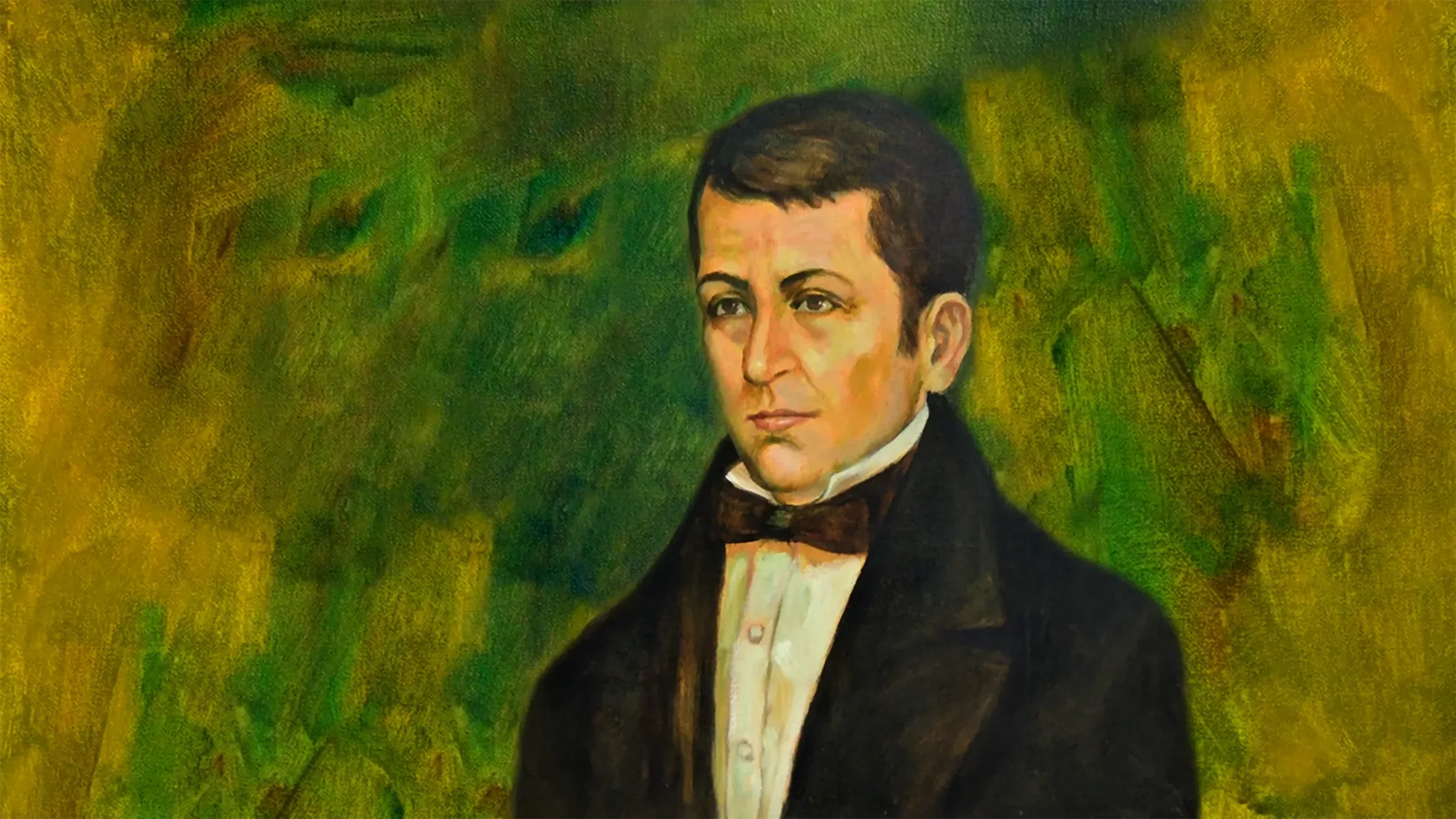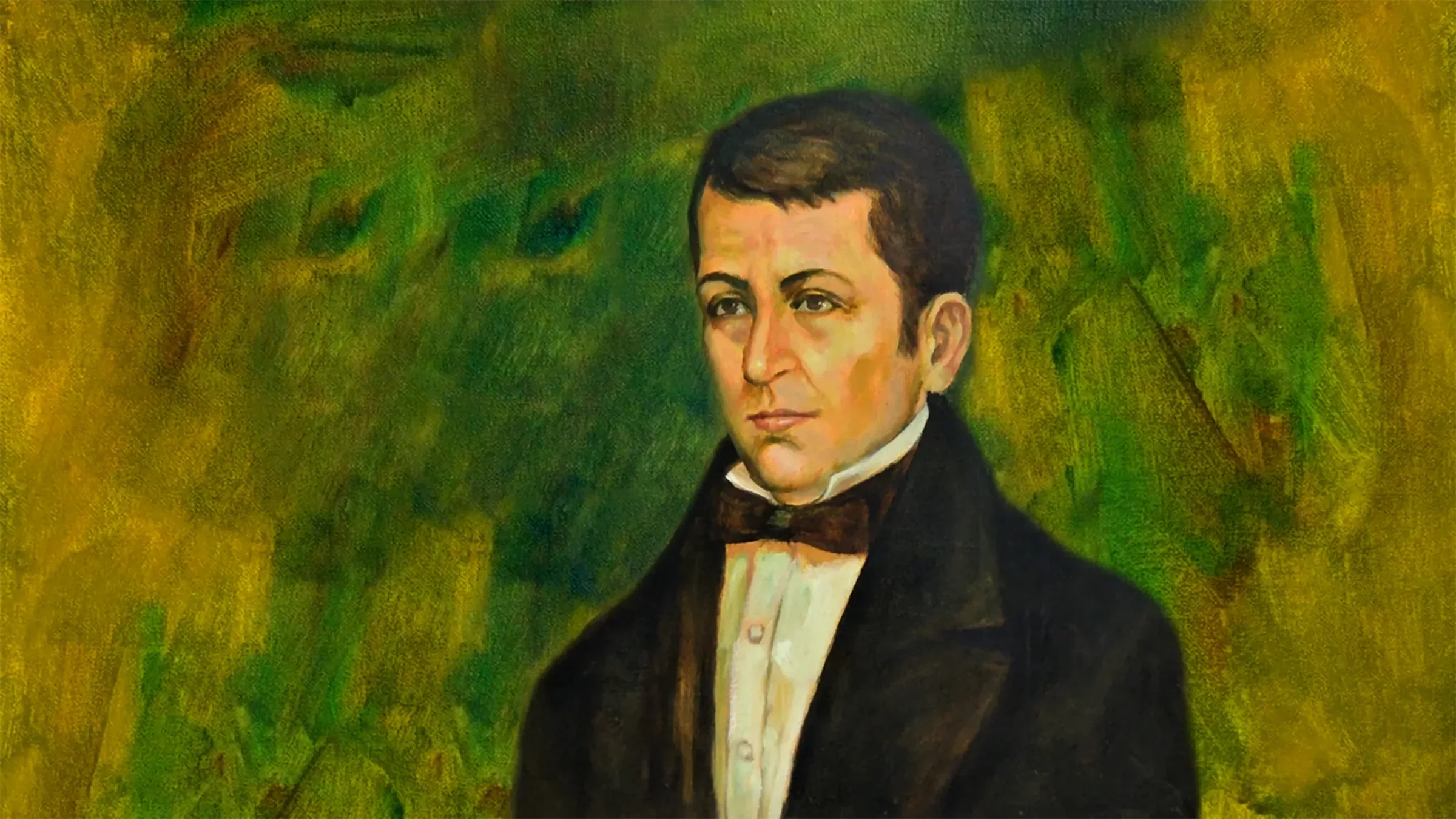Biography of Dionisio de Herrera

José Dionisio de la Trinidad de Herrera y Díaz del Valle, was born on October 9, 1781 in Choluteca, Honduras and died on June 13, 1850 in the country of El Salvador at the age of 69. He is the son of Juan Jacinto Herrera and Paula Díaz del Valle. Honduran lawyer, representative of liberalism, he was named Father of the Honduran Homeland for his political and nation achievements in Honduras and Central America.
Dionisio Herrera was the first son of don Juan Jacinto Herrera, provincial mayor of Villa de Choluteca since 1793. His mother was Paula Díaz del Valle Izaguirre, sister of the mother of José Cecilio del Valle.

Biography
Among his achievements stand out being the first Head of State of Honduras, having created the first political division of Honduras, establishing the first National Coat of Arms and having promulgated the first Political Constitution of the Republic. In addition to greatly influencing the training and education of his nephew-in-law Francisco Morazán, another of the heroes that this land had the honor of possessing.
He became the only politician in the history of Central America popularly elected Head of three States.
He studied at the Universidad San Carlos de Guatemala, obtaining a law degree. In his early years in Honduras, he worked at the Secretary of the Tegucigalpa City Council where he organized gatherings related to the independence events in other countries such as Mexico and the struggles of Bolívar and San Martín.
His wife was Micaela Josefa Quezada Borjas, with whom he had 9 children. Doña Micaela was the sister of the mother of General Francisco Morazán, of whom Herrera was tutor.
His brother Justo José Vicente Herrera Díaz del Valle held the position of Supreme Head of the State of Honduras from 1837 to 1838 and another brother, Próspero José Herrera Díaz del Valle, was a deputy and minister plenipotentiary to France and England.
Education
Dionisio Herrera studied at the University of San Carlos Borromeo in Guatemala, where by that time, and thanks to the efforts of Messrs. Villaurrutia, Ramírez, Goicoechea and Cañas, the teaching plan had been extended and improved. Drawing schools had been opened, philosophy courses and other notable reforms had also been adopted.
It fell to the young Dionisio Herrera to take advantage of this favorable circumstance, and due to it and to the study he made of history and of the deepest French philosophers and writers (Rousseau, Montesquieu, Diderot, d’Alembert), «he was already a man of letters and a man of state, of thought and action”, when the independence of Central America was declared .
At the end of his studies, he graduated as a lawyer with the thesis «La Ley». He then returned to Honduras, where he established his personal library (one of the most complete at the time), composed mainly of works in French (a language that he himself mastered, like his mother tongue), through which he spread the ideas liberals. This was set on fire by his political opponents, considering that it was composed of «heretical books».
First Constitution of Honduras
Dionisio de Herrera after being elected as the first Supreme Head of the State of Honduras in 1824 for a period of four years (from September 16, 1824 to May 10, 1827.) by the Constituent Assembly in Cedros, appointed as Secretary General of Honduras to his nephew Francisco Morazán, with whom they wrote and signed the first Political Constitution of Honduras, being the first Magna Carta of the country. Its promulgation was made on December 11, 1825 and was in force until the separation of Honduras from the Central American Federation.
The Constitution carried the eminently liberal character of its authors, and like the Constitution of the United States, determined fundamental rights, abolished slavery, respect for the privacy of citizens and limited the privileges of the clergy, represented by the Catholic Church. Honduras is defined as a state and its Honduran inhabitants, following the rhetoric of the Declaration of Absolute Independence issued by the National Constituent Assembly in 1823.
Signed by the deputies representing the parties that made up the political and territorial division of the country, which were the following: Yoro, Nacaome, Santa Bárbara, Cantarranas, Gracias a Dios (Thanks) and Tegucigalpa. Sanctioned by Dionisio de Herrera and General Francisco Morazán, in his capacity as Secretary General of Honduras.
See First Constitution of the State of Honduras of 1825
Dionisio de Herrera the Father of the Nation
Being the Supreme Head of the State of Honduras, he dedicated himself to developing agriculture, industry and in general to organizing the state as a progressive and developed nation. In his government, the first political division of Honduras was established in 7 departments:
- Choluteca
- Comayagua
- Thank you (today it is the department of Lempira )
- Santa Bárbara
- Olancho
- Tegucigalpa
- Yoro
He also created the first Supreme Court of Justice and established the first Coat of Arms of Honduras on October 3, 1825 (very similar to the one used today).
He was dismissed in 1827 through a clerical insurrection by the canon Irías and by the conservatives of Guatemala, where he was taken prisoner until 1829, when he was freed by General Francisco Morazán in the battle known as «Battle of Las Charcas» .
Drafter of the Act of Independence of 1821
After having obtained a law degree from the University of Guatemala, Herrera settled in the then Villa de San Miguel Arcángel de Tegucigalpa (since 1818). On August 7, 1820, he held his first public office when he was appointed Secretary of the City Council in the administration of the last Spanish Mayor, Narciso Mallol. However, Herrera was an independentista and was an organizer of gatherings where the events of Spain, Mexico, the struggles of Bolívar and San Martín were discussed.
In July 1821, the lawyers Juan Esteban Milla and Dionisio de Herrera were elected deputy and substitute deputy, respectively, in the Cortes for the acceptance of the Cádiz Constitution.
On September 15, 1821, the independence of the peoples of Central America was proclaimed in Guatemala City.
Before long, however, a confrontation broke out between traditionally conservative Comayagua and liberal Tegucigalpa over the issue of joining the new Mexican Empire. While the Conservatives approved of it, the Liberals were loyal to Guatemala and advocated an independent Central American federal republic, modeled on the United States. Despite resistance from Herrera and his fellow party members, the union was finally given to Mexico. However, it was already ending within a year, with the fall of Emperor Agustín I.
After Central America became independent from Mexico, Herrera was appointed governor of the province of Tegucigalpa, on March 23, 1823. In this capacity, he made effective the merger of the provinces of Comayagua and Tegucigalpa in the federal state of Honduras. With this objective, a Constituent Assembly was convened on August 29, 1824, which met in the town of Cedros and its first president was Dr. Pedro Nolasco Arriaga and the secretary was Mr. Miguel Rafael Valladares.
By means of the agreement dated September 16, 1824, this Assembly effected the union of both provinces (Comayagua and Tegucigalpa) and Dionisio de Herrera was elected as First Head of State of Honduras and Lieutenant General José Justo Milla was elected as deputy head. conservative orientation.
Creation of the first Coat of Arms of Honduras
By means of decree No. 16 of the nascent nation Dionisio de Herrera establishes the first Coat of Arms of the State of Honduras , detailing within article 142 the interpretations thereof.
After Honduras separated from the Federal Republic of Central America, and proclaimed itself as a free and independent State, it was agreed that the current and current Coat of Arms agreed by the National Congress would be used, and ratified by decree as a national symbol on the 10th of January 1935.
Retirement from politics and death
On November 12, 1838, the Assembly ruled in favor of the separation of Honduras from the Federal Republic of Central America, against the will of Herrera. With the proclamation of the second Constitution of Honduras (January 11, 1839) Herrera retired from politics.
In December 1849, he moved with his family to El Salvador, where he worked as a primary school teacher in the city of San Salvador.
On May 30, 1850 he dictated his will and on June 13 of the same year he died in San Salvador in poverty and leaving a large family, since 1897 his remains rest in the El Rosario Church located in the historic center of San Salvador. Recently, an investigation by El Heraldo newspaper revealed the loss of the tomb of the Central American hero, a circumstance that initiated an investigation by the authorities of El Salvador.
To honor the memory of such an exalted hero, the “Orden Dionisio de Herrera” has been established , one of the highest decorations that the Honduran government gives to honor personalities who stand out for their noble work for the country. His image also appears on the 20 lempira bill with the legend «Dionisio de Herrera First Head of State of Honduras.»


